I had the good fortune of discovering both dark and light-morph Harlan's Hawks in Utah County, Utah a couple of winters ago. In both cases it was
Jerry Liguori who confirmed and educated me on the identifications. I've used
Jerry's Books and his personal instruction on numerous occasions since I began looking for hawks about four years ago. I get excited for raptors around this time of year in Utah because we begin to see northern raptors such as Bald Eagle, Rough-legged Hawk, and Merlin. We also see more of our native raptors such as Ferruginous Hawk and Prairie Falcon as they return from remote nesting areas. Having them perch in deciduous trees which have lost their leaves makes them all the more visible during the winter months as well. I shared a post about this time last year called
Utah's Winter Raptors Revisited. This year I want to share some of the images and information I've learned about Harlan's Hawks in hopes of seeing them again this winter.
Harlan's Hawks breed in Alaska and northwestern Canada. They migrate to the western US states during our winter months. Most Harlan's Hawks are dark types (intermediate and dark). About 12% are light. They are typically very skittish birds and don't allow close approach by humans so it is often difficult to get good images of them. I suspect they are skittish because they don't breed near large human populations. Two years ago I shared the image below with the local birding community and learned it was a Harlan's Hawk. Days later I was able to locate multiple dark Harlan's Hawks in a location we locally refer to as "the point of the mountain." It is also the site of Utah's
Flight Park State Recreation Area.
 |
| Juvenile Dark Type Harlan's Hawk in Lehi, UT. The banding in the primary feathers can be seen clear to the tips on juvenile Harlan's Hawks. That is generally not the case for juvenile western Red-tailed Hawks which show dark primary tips. |
Below is a juvenile Harlan's Hawk on the left and a juvenile western Red-tailed Hawk on the right. Shadowing makes the right-side primary feathers of the Harlan's Hawk appear to have dark tips. However, the left wing is fully lit and reveals the banding to the tips. The banding in the wings and the tail of the Harlan's is also thicker than those of the western race of the species.
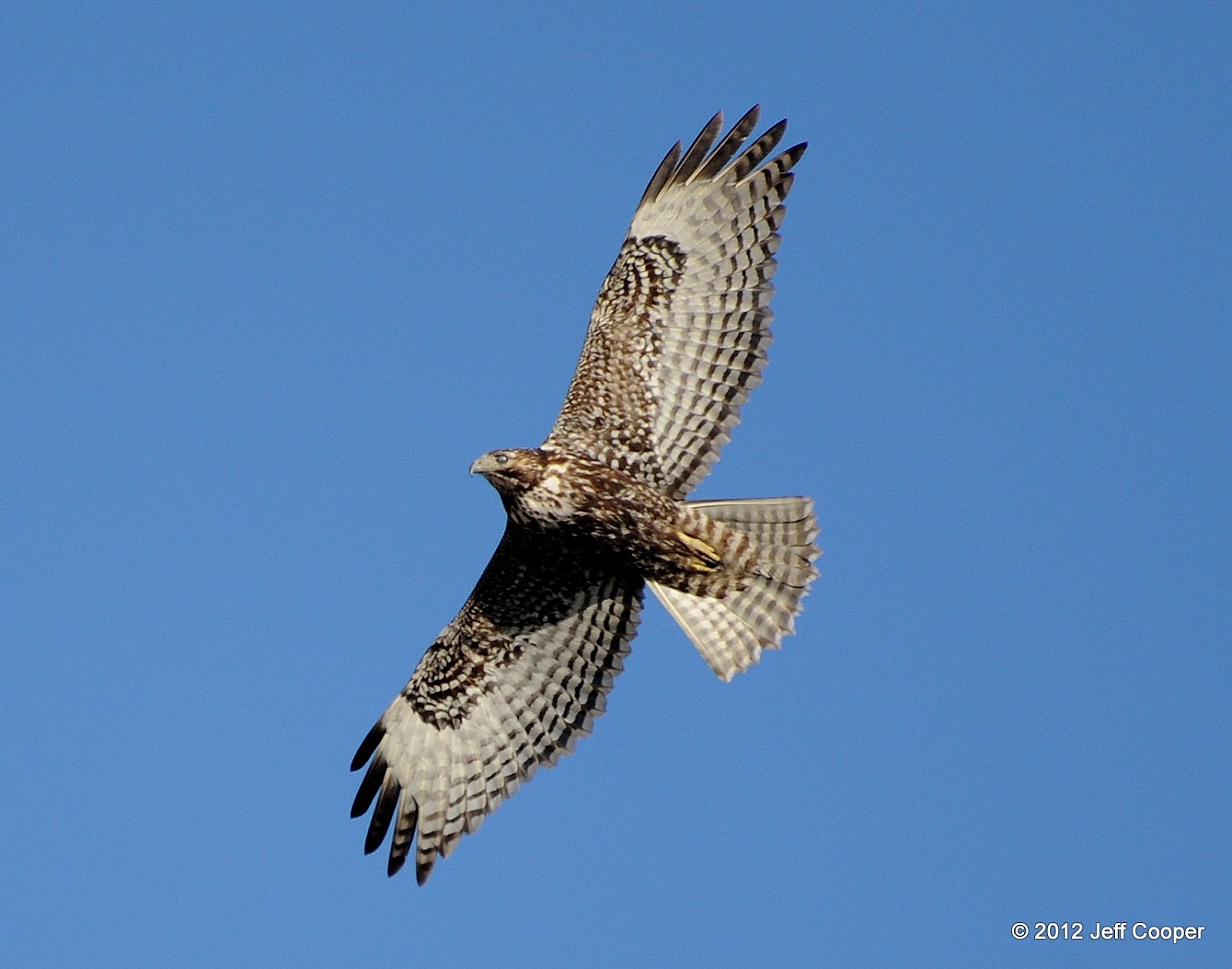 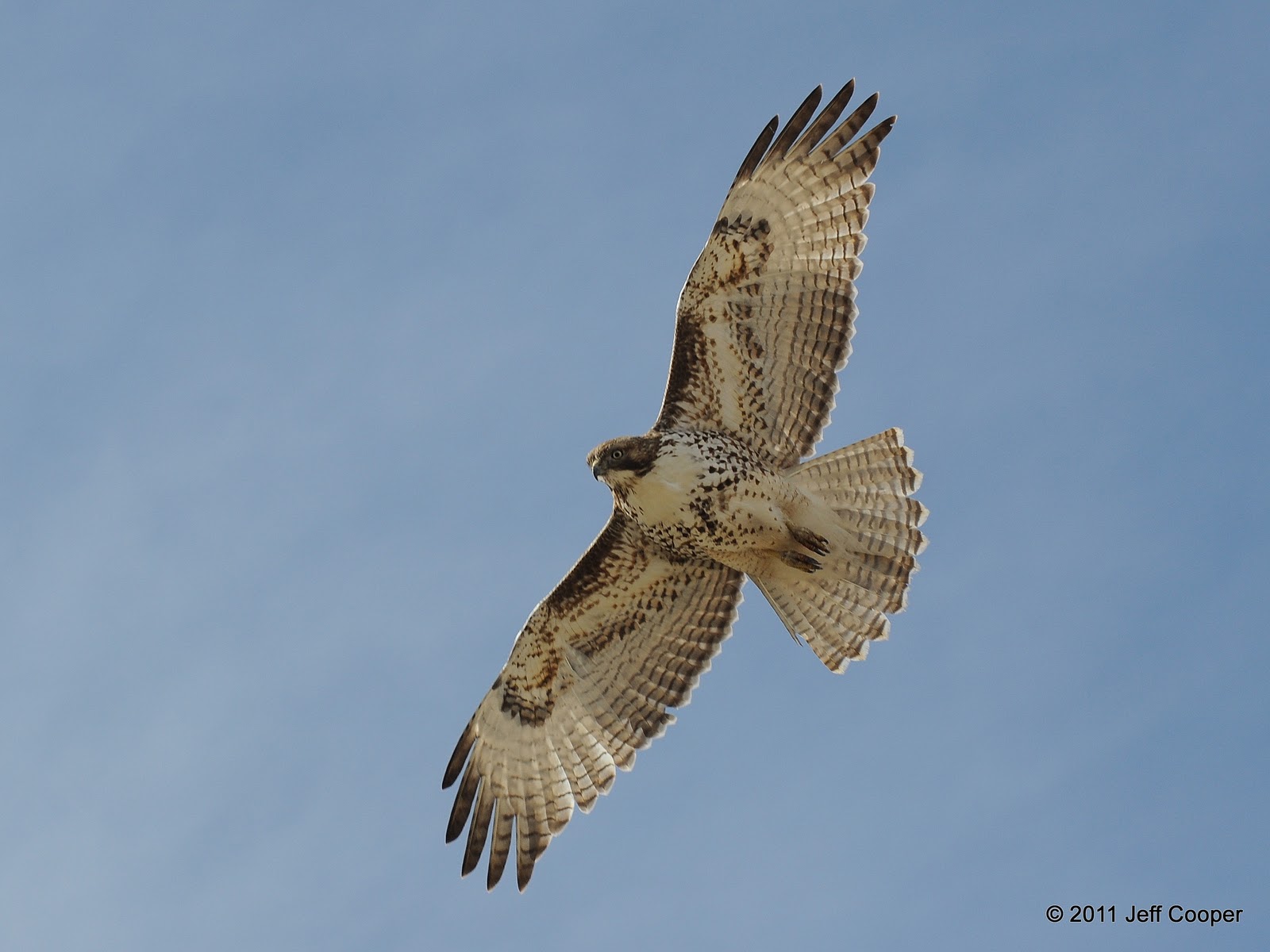
The image below is of a juvenile dark Harlan's Hawk. The head shows a mix of light and dark feathers. Speckling occurs on the back and upper wing coverts. Thick dark banding is also seen in the tail feathers. |
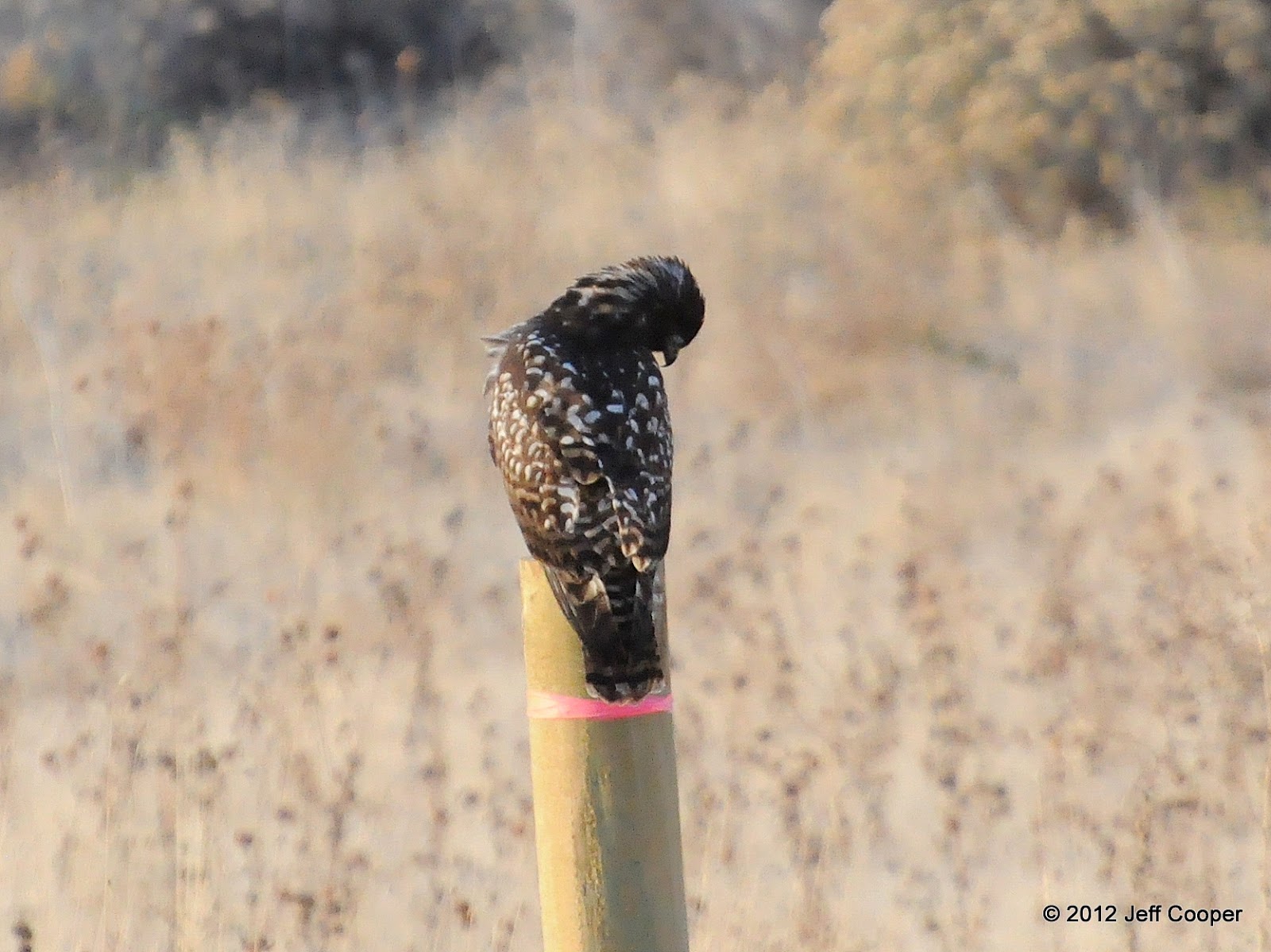 |
| Juvenile Dark Harlan's Hawk in Lehi, UT |
|
I've seen and photographed some adult dark adult Harlan's Hawks from a distance. However, even at a distance they can be recognized when certain field marks are visible. The tail is often the most obvious identifier for adult Harlan's because it appears washed out. It can show mostly whitish/gray with some red or dark edging or borders. From what I've observed, dark Harlan's often show dark coloration to the edges and/or end of the tail. Light Harlan's often show more of a rufous coloration on the edges and/or end of the tail. However, Brian Sullivan, one of the authors of The Crossley ID Guide: Raptors, shared with me that the tail patterns of both light and dark Harlan's can range from from all white to nearly black, with all sorts of mottled combinations and colors in between. While some dark Harlan's show banding in the tail, he has yet to see a light morph with true banding in the tail. The image below has been severely cropped, but I knew this was an adult dark Harlan's when I saw the mostly white tail with darkish borders.
 |
| Adult Dark Harlan's Hawk in Provo, UT |
Here is a front view of the same dark adult. It is mostly dark with some mottling in the head and more on the upper chest.
 |
| Adult Dark Harlan's Hawk in Provo, UT |
And here is another view of the same dark adult flying away and showing the tail.
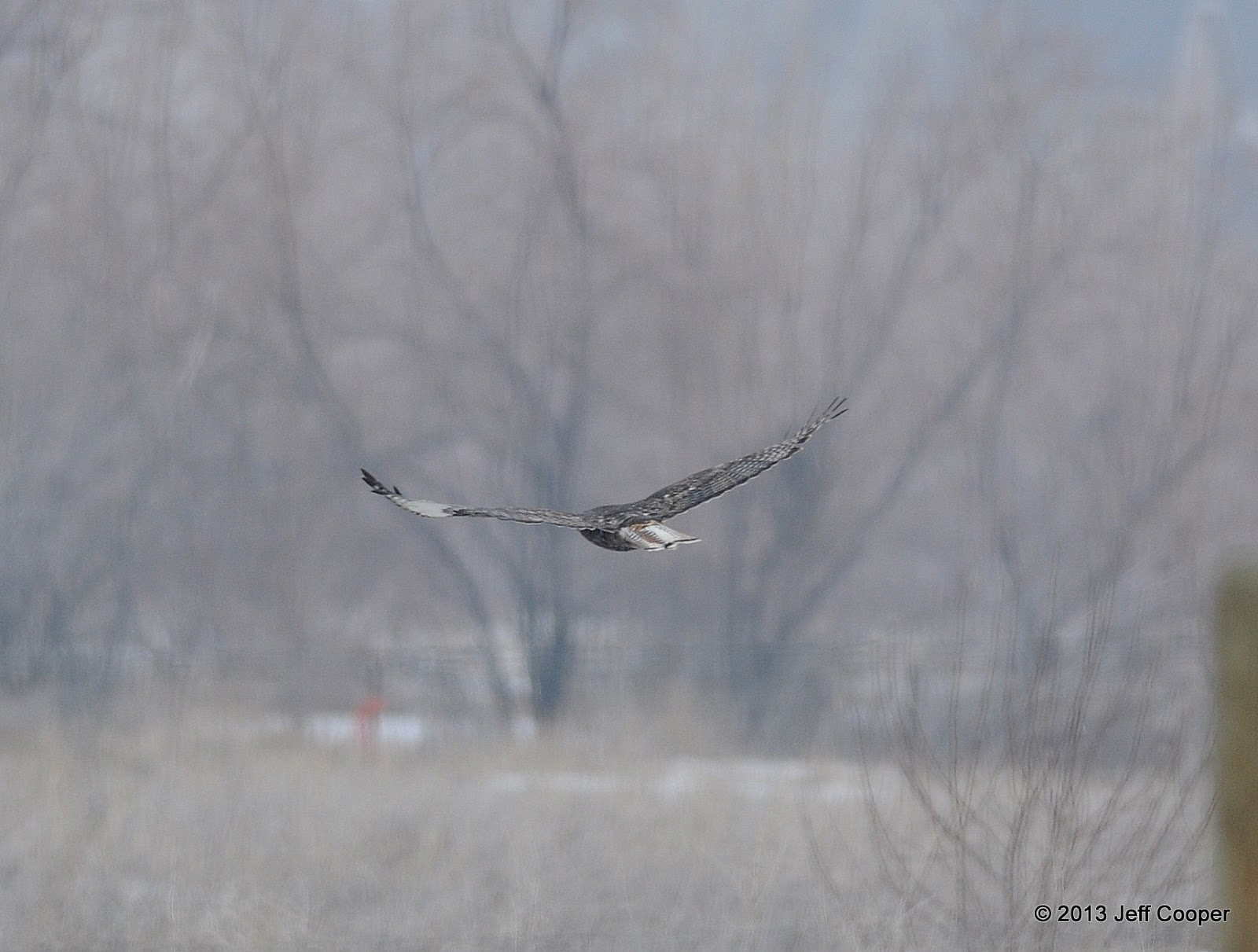 |
| Adult Dark Harlan's Hawk in Provo, UT |
Once I began to become familiar with Harlan's Hawks I became more aware of their presence. I found another location last winter that had a couple of dark adults. They were in Lehi, Utah along a newly constructed boulevard called Pioneer Crossing.
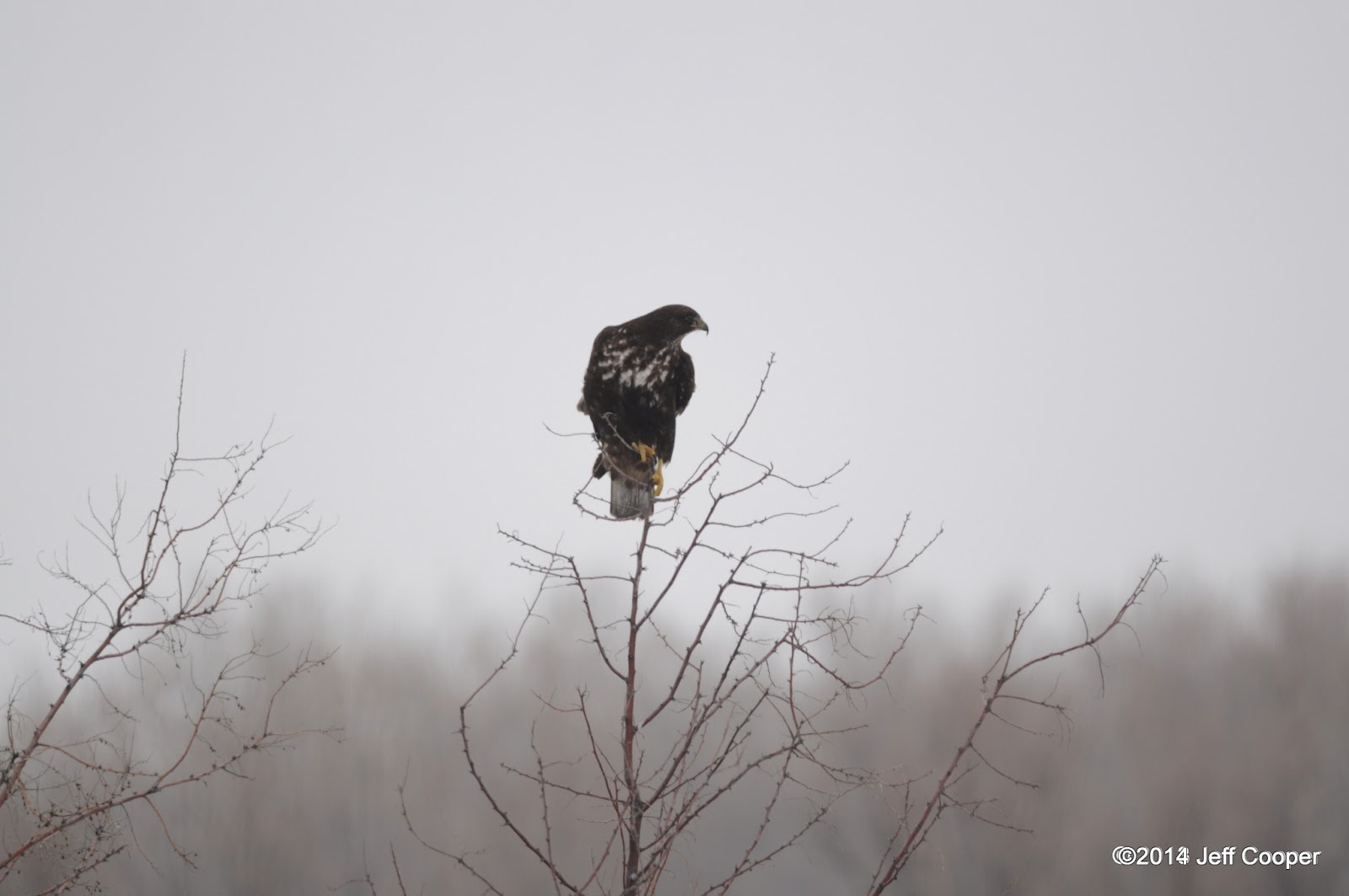 |
| Adult Dark Harlan's Hawk in Lehi, UT |
Just miles from my home in Pleasant Grove I found two more Harlan's Hawk near Pleasant Grove Boulevard. The one below was hunting in an open field and landed as it attempted to catch some prey. You can see the streaking in the head, a white arc over the eye, and the mottled chest.
 |
| Juvenile Dark Harlan's Hawk in Pleasant Grove, UT |
This is a second Harlan's Hawk flying over the same field. It's chest is not as white, but it shows barring to the tips of the primaries, streaking in the head, consistent mottling of black and white throughout, and the jagged tail feathers typical of dark type juveniles. This particular bird shows some buff color behind the eye and gape.
 |
| Juvenile Dark Harlan's Hawk in Pleasant Grove, UT |
Below is the top side of the same juvenile pictured above. Mottling is seen in the scapulars and the upper wing coverts. Heavy barring in the tail and the jagged tail tips are also visible.
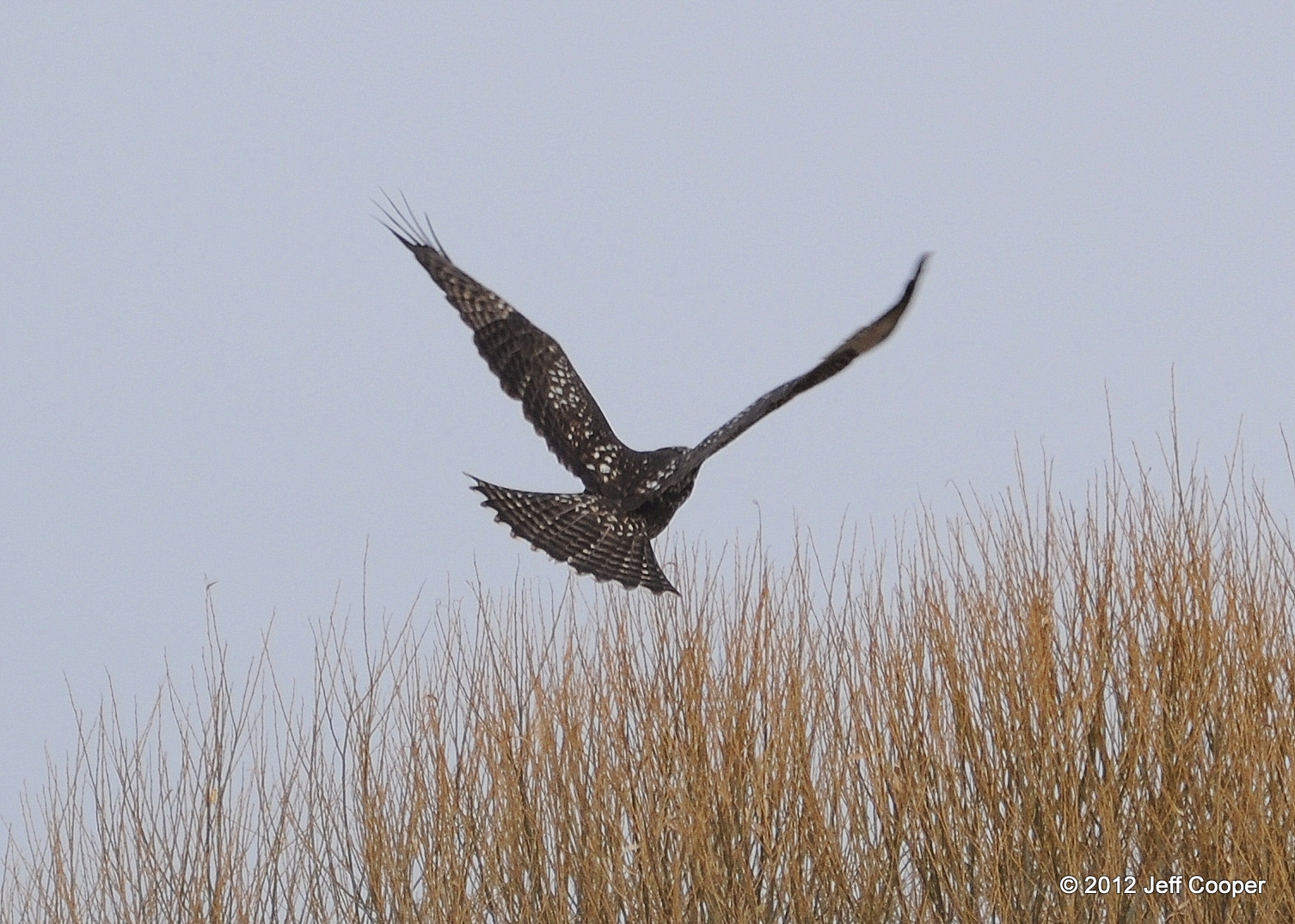 |
| Juvenile Dark Harlan's Hawk in Pleasant Grove, UT |
An adult light Harlan's I located in American Fork, Utah last winter allowed me to study it for several days. This was the most fun I've had with observing a Harlan's Hawk. The image of that hawk below shows streaking in the head as opposed to the typical dark head of western Red-tailed Hawks. White above the eye is quite visible. Rather than the typical belly banding of western Red-tailed Hawks this one shows a bright white belly (no buffy coloring) with well demarcated spotting on the upper chest and streaking in the neck area. The prominent rufous coloring of a typical western Red-tailed Hawk is absent from the tail of this bird in this view.
 |
| Light Adult Harlan's Hawk in American Fork, UT |
Again, one of the quickest ways to spot an adult Harlan's Hawk is seeing its tail. This image reveals a predominately white tail with some rufous coloring on the side and tip.
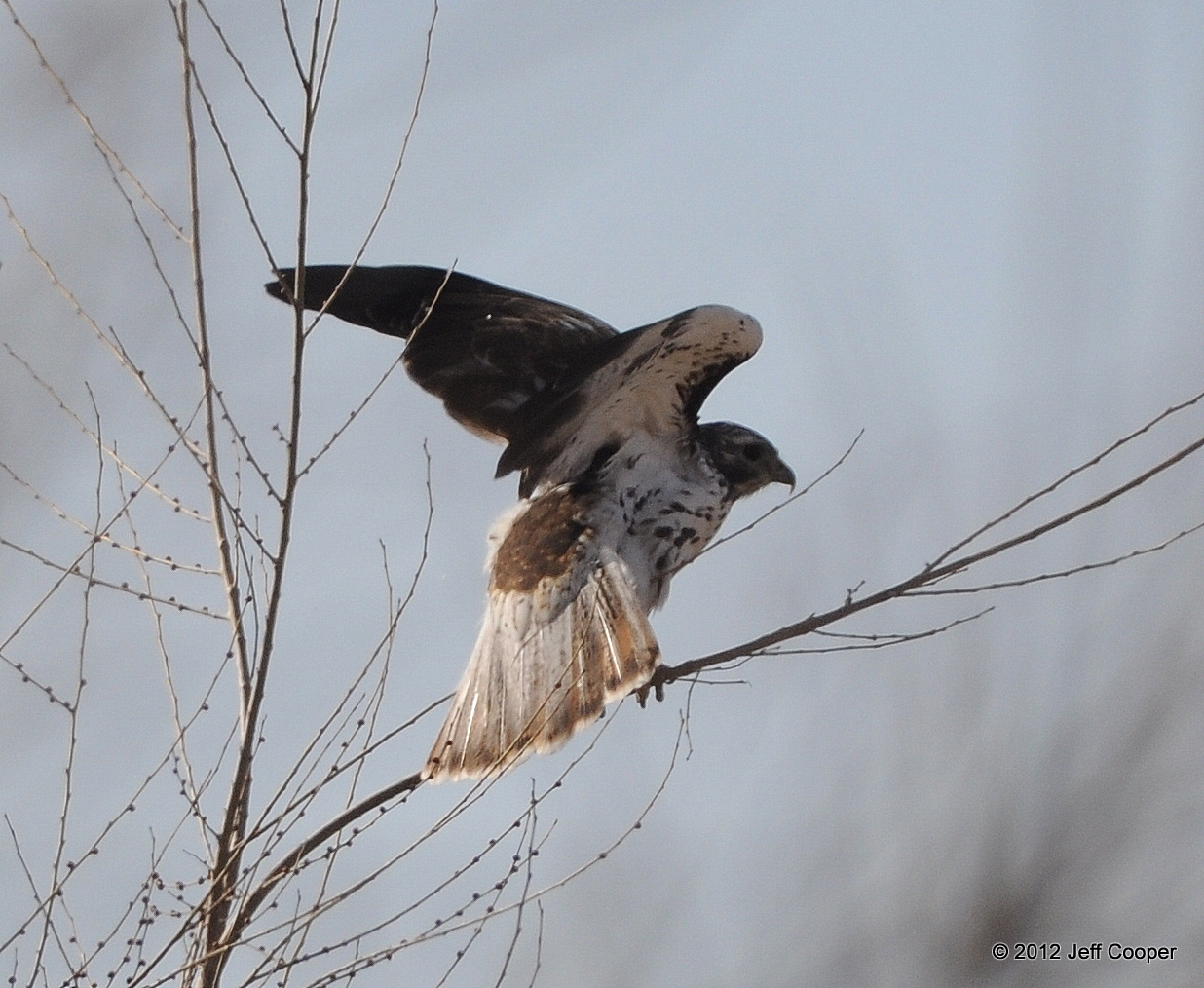 |
| Light Adult Harlan's Hawk in American Fork, UT |
The dark terminal band in the wings indicates the hawk is an adult. Juveniles don't show such a thick terminal band. It is not uncommon for banding to be almost absent in the flight feathers of adult Harlan's Hawks, especially for light adults like the one being shared in these images. This feature is extremely rare with other races of Red-tailed Hawks. Mottling in the flight feathers is another characteristic for adult Harlan's Hawks. Mottling can be seen throughout the underside of the tail and wing feathers in the image below.
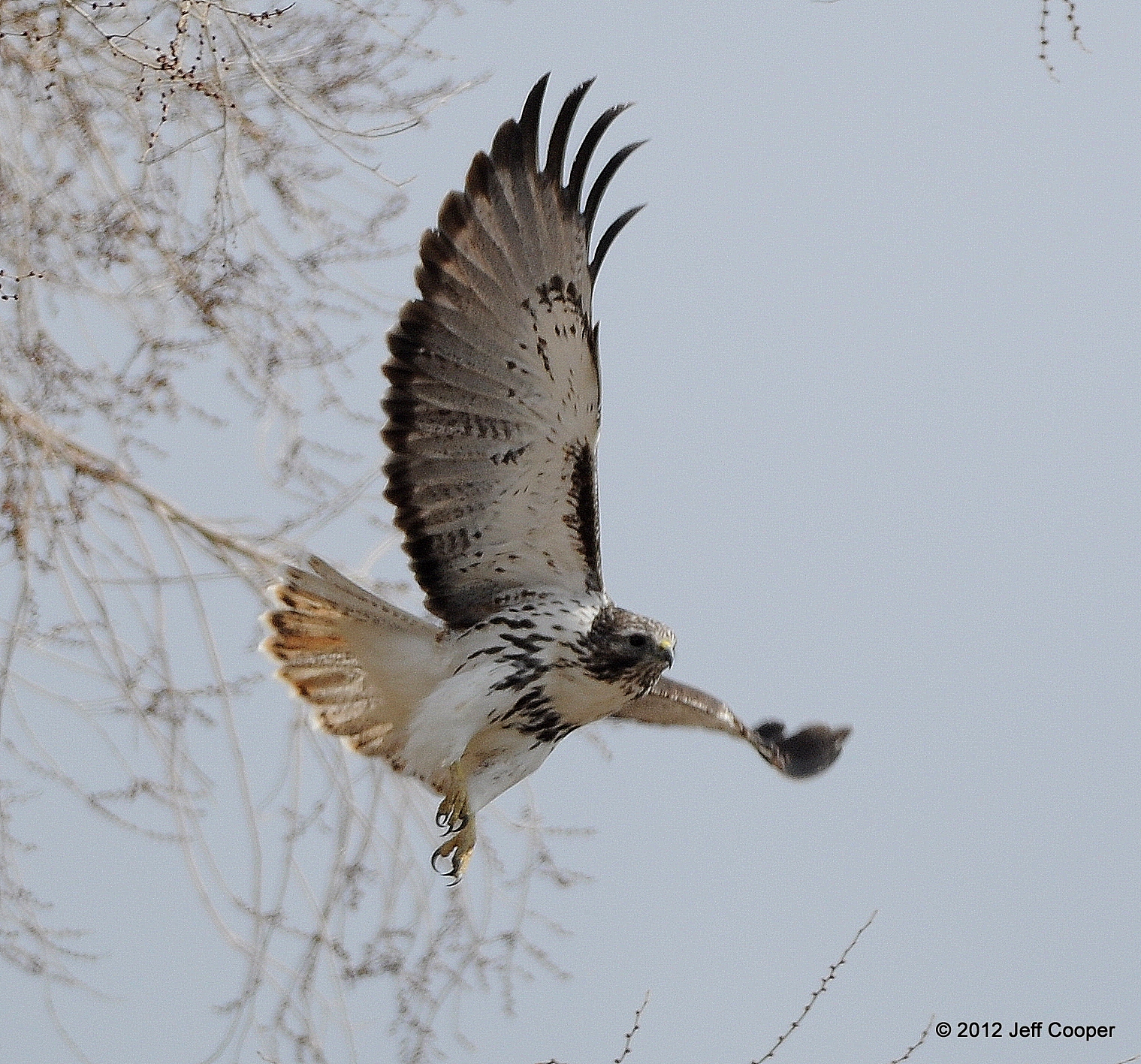 |
| Light Adult Harlan's Hawk in American Fork, UT |
In addition to the tail, the dorsal view of an adult Harlan's Hawk reveals white scapulars on an otherwise brown upper side. Light and dark Harlan's Hawks are generally brownish on the upper side, despite how dark or light the under side may appear.
Below are a few more images of the light adult Harlan's Hawk. Unlike juvenile Harlan's Hawks, adults do have dark primary tips like other western Red-tailed Hawks. Barring to the tips of the primaries is a trait for juvenile Harlan's Hawks, not adults.
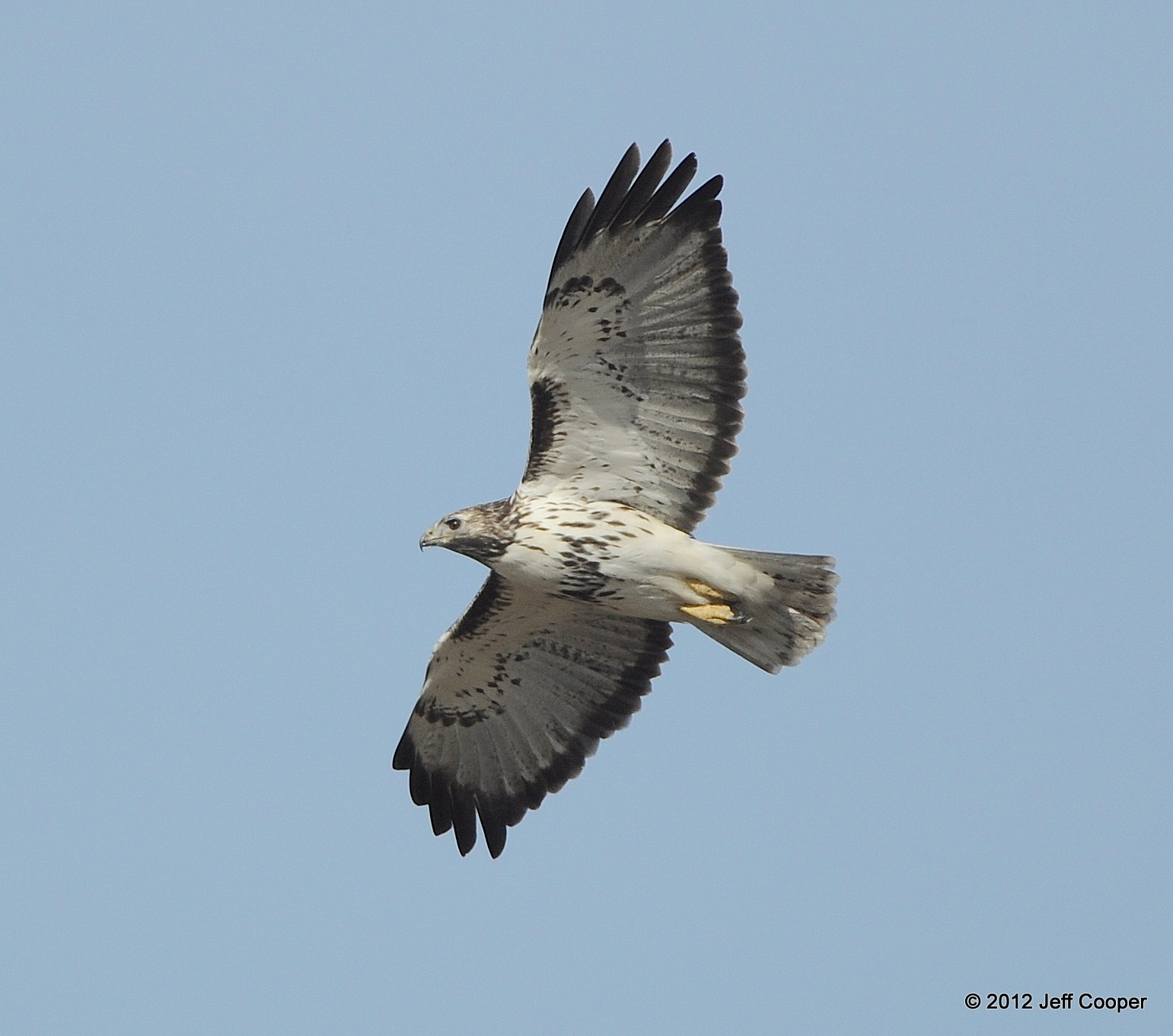 |
| Light Adult Harlan's Hawk in American Fork, UT |
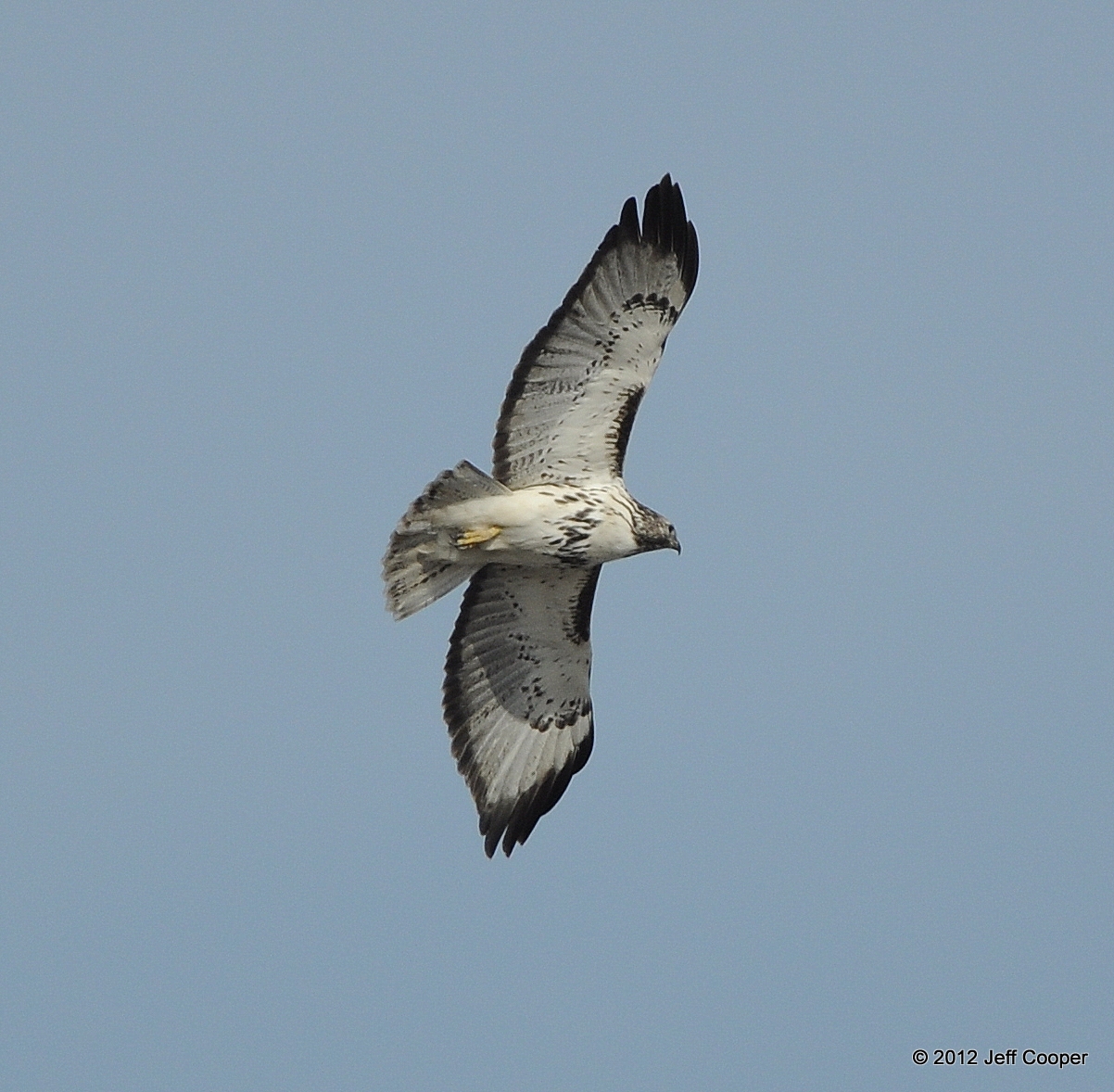 |
| Light Adult Harlan's Hawk in American Fork, UT |